Intermec Technologies INBT01 BT board User Manual
Intermec Technologies Corporation BT board
User Manual

1
Product Name: BT board
Brand Name: Intermec
Model No: INBT01
User’s Guide
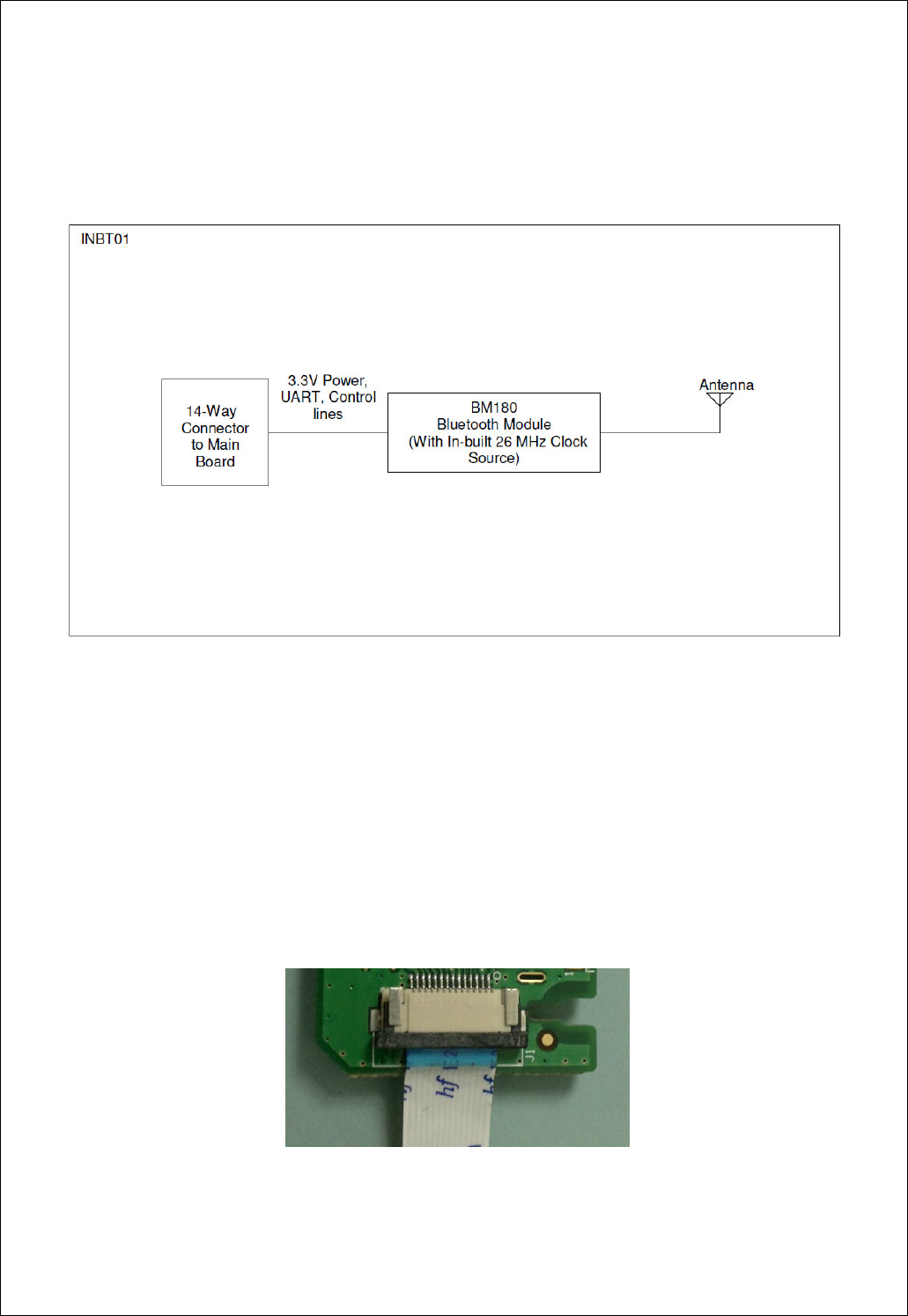
2
Introduction
INBT01 is a Bluetooth Module. This can be made to connect to other Bluetooth wireless devices by
integrating the INBT01 module to the user’s device for which Bluetooth functionality is targeted.
The module block diagram is shown Figure 1
Figure 1: INBT01 - Block Diagram
It consists of 3 main portions
1. Antenna – Transmit/Receive RF Signal to/from other Bluetooth devices
2. BT Module – BM 180 – Used for Transmit/ Receive data to and from other Bluetooth devices
3. UART Interface – Interface to the external UART host
The BT Module is integrated to the printer by professional Installation, via the FFC which contains the
UART interface to the host CPU, apart from some GPIO lines. It is a 14-pin connector as shown in photo in
Figure 2.
Figure 2: UART Interface - 14 Pin Connector
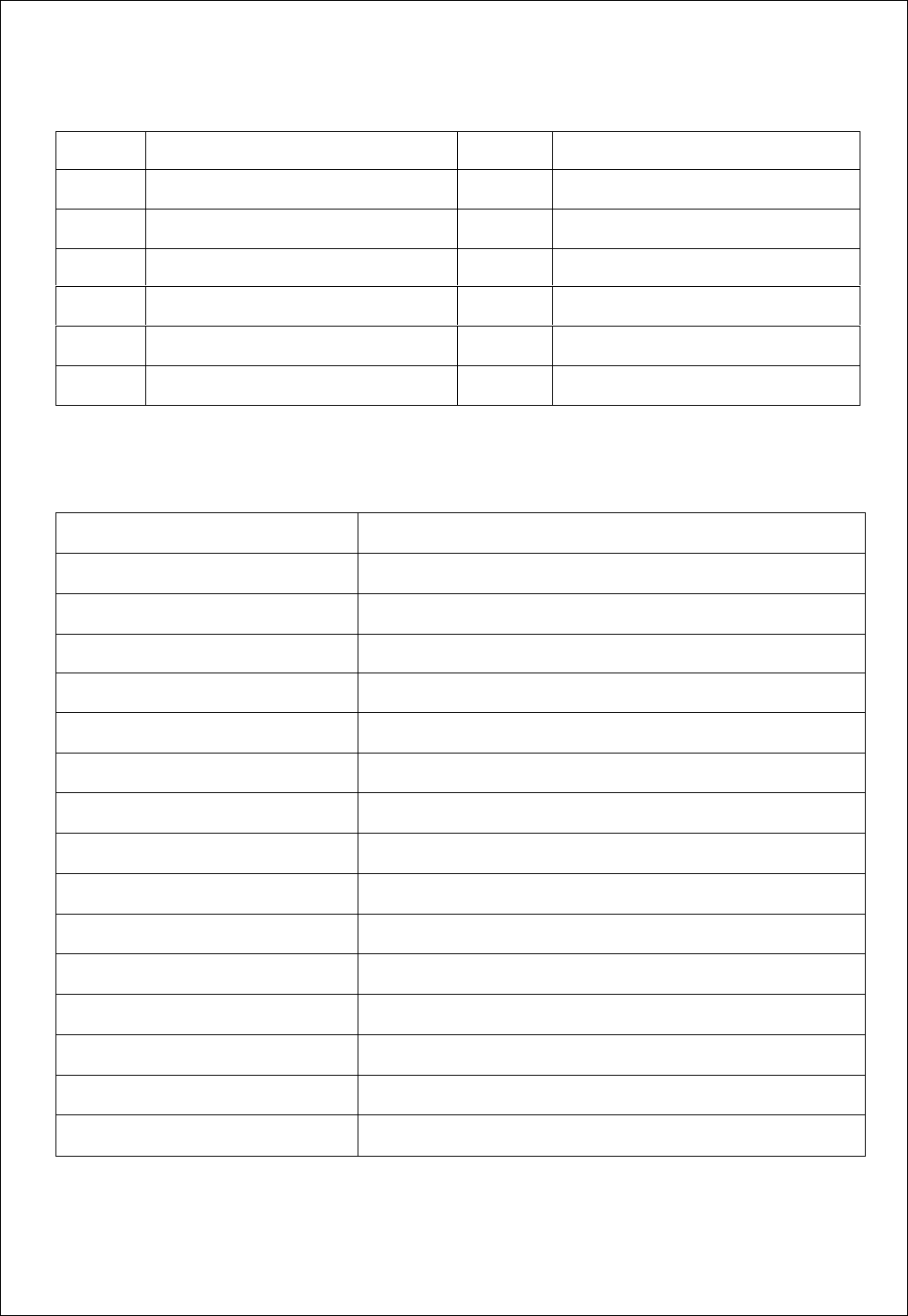
3
The Pin assignment is listed in Table 1.
Table 1.Connector Pin-out
Specifications
Product Name BT board
Model Number INBT01
Standard V2.1+EDR
Frequency Band 2.4GHz ~ 2.48GHz Unlicensed ISM band
Modulation Method FHSS (GFSK, /4 –DQPSK, 8DPSK)
Spread Spectrum Frequency Hopping Spread Spectrum
Transfer rates (Max) 3Mbits/s
RF Output Power 3 dbm (Transmission Typical)
Antenna terminal NA
Host Interface UART 4 wire interface to host (Rx, Tx, RTS, CTS)
Supply Requirement 3.3 VDC, 0.1A
Dimension 41.5mm (L)X 23mm(W) X 5.5mm(H)
Operating Temperature -10 ~ +50 °C
Storage Temperature -20 ~ +60 °C
Humidity 10 ~ 90 % non-condensing
The Number of Channels & Channel
Spacing 79 channel, 1Mhz spacing
Table 2: Specifications
1 Ground 2 Power, 3.3V
3 Data_Exit 4 Host_Wake
5 Host_Sleep 6 BT_LED
7 Ground 8 CMD_Data
9 UART_RTS 10 UART_TX
11 UART_CTS 12 UART_RX
13 Power, 3.3V 14 Ground

4
Regulatory Information
The Bluetooth radio is designed to be interoperable with any Bluetooth technology product that is based on
frequency hopping spread spectrum (FHSS) radio technology and complies with the Bluetooth
Specification Version 2.1.
The Bluetooth radio, like other radio devices, emits radio frequency electromagnetic energy. The level of
energy emitted by this device, however, is less than the electromagnetic energy emitted by other wireless
devices such as mobile phones. The Bluetooth radio device operates within the guidelines found in radio
frequency safety standards and recommendations. These standards and recommendations reflect the
consensus of the scientific community and result from deliberations of panels and committees of scientists
who continually review and interpret the extensive research literature. In some situations or environments,
the use of a Bluetooth radio device may be restricted by the proprietor of the building or responsible
representatives of the applicable organization. Examples of such situations include the following:
• Using the Bluetooth radio equipment onboard airplanes, or
• Using the Bluetooth radio equipment in any other environment where the risk of interference with
other devices or services is perceived or identified as being harmful.
If uncertain of the policy that applies to the use of wireless devices in a specific organization or
environment (an airport, for example), ask for authorization to use the Bluetooth radio device before
turning it on.

5
Federal Communication Commission Interference Statement
This equipment has been tested and found to comply with the limits for a Class B digital device, pursuant
to Part 15 of the FCC Rules. These limits are designed to provide reasonable protection against harmful
interference in a residential installation. This equipment generates, uses and can radiate radio frequency
energy and, if not installed and used in accordance with the instructions, may cause harmful interference
to radio communications. However, there is no guarantee that interference will not occur in a particular
installation. If this equipment does cause harmful interference to radio or television reception, which can
be determined by turning the equipment off and on, the user is encouraged to try to correct the
interference by one of the following measures:
Reorient or relocate the receiving antenna
Increase the separation between the equipment and receiver
Connect the equipment into an outlet on a circuit different from that
to which the receiver is connected
Consult the dealer or an experienced radio/TV technician for help
FCC Caution:
Any changes or modifications not expressly approved by the party responsible for
compliance could void the user's authority to operate this equipment.
This device complies with Part 15 of the FCC Rules. Operation is subject to the following two conditions: (1)
This device may not cause harmful interference, and (2) this device must accept any interference received,
including interference that may
cause undesired operation.
IMPORTANT NOTE:
FCC Radiation Exposure Statement:
This equipment complies with FCC radiation exposure limits set forth for an uncontrolled environment. This
equipment should be installed and operated with minimum distance 20cm between the radiator & your
body.
This transmitter must not be co-located or operating in conjunction with any other antenna or transmitter.

6
This device is intended only for OEM integrators under the following conditions:
1) The antenna must be installed such that 20 cm is maintained between the antenna and users, and
2) The transmitter module may not be co-located with any other transmitter or antenna,
As long as 2 conditions above are met, further transmitter test will not be required. However, the OEM
integrator is still responsible for testing their end-product for any additional compliance requirements
required with this module installed
IMPORTANT NOTE:
In the event that these conditions can not be met (for example certain laptop
configurations or co-location with another transmitter), then the FCC authorization is no longer considered
valid and the FCC ID can not be used on the final product. In these circumstances, the OEM integrator will
be responsible for re-evaluating the end product (including the transmitter) and obtaining a separate FCC
authorization.
End Product Labeling
This transmitter module is authorized only for use in device where the antenna may be installed such that
20 cm may be maintained between the antenna and users. The final end product must be labeled in a
visible area with the following: “Contains FCC ID:EHA-INBT01”
Manual Information to the End User
The OEM integrator has to be aware not to provide information to the end user regarding how to install or
remove this RF module in the user’s manual of the end product which integrates this module.
The end user manual shall include all required regulatory information/warning as show in this manual.

7
Europe – EU Declaration of Conformity
This device complies with the essential requirements of the R&TTE Directive 1999/5/EC.
The following test methods have been applied in order to prove presumption of
conformity with the essential requirements of the R&TTE Directive 1999/5/EC:
- EN 60950-1: 2006:+A11:2009+A1:2010
Safety of Information Technology Equipment
- EN50371 : 2002
- Generic standard to demonstrate the compliance of low power electronic and
electrical apparatus with the basic restrictions related to human exposure to
electromagnetic fields (10 MHz - 300 GHz) -- General public
- EN 300 328 V1.7.1: 2006
- Electromagnetic compatibility and Radio spectrum Matters (ERM); Wideband
Transmission systems; Data transmission equipment operating in the 2,4 GHz ISM band
and using spread spectrum modulation techniques; Harmonized EN covering
essential requirements under article 3.2 of the R&TTE Directive
EN 301 489-1 V1.8.1: 2008
Electromagnetic compatibility and Radio Spectrum Matters (ERM); ElectroMagnetic
Compatibility (EMC) standard for radio equipment and services; Part 1: Common
technical requirements
EN 301 489-17 V2.1.1 2009
Electromagnetic compatibility and Radio spectrum Matters (ERM); ElectroMagnetic
Compatibility (EMC) standard for radio equipment and services; Part 17: Specific
conditions for 2,4 GHz wideband transmission systems and 5 GHz high performance
RLAN equipment
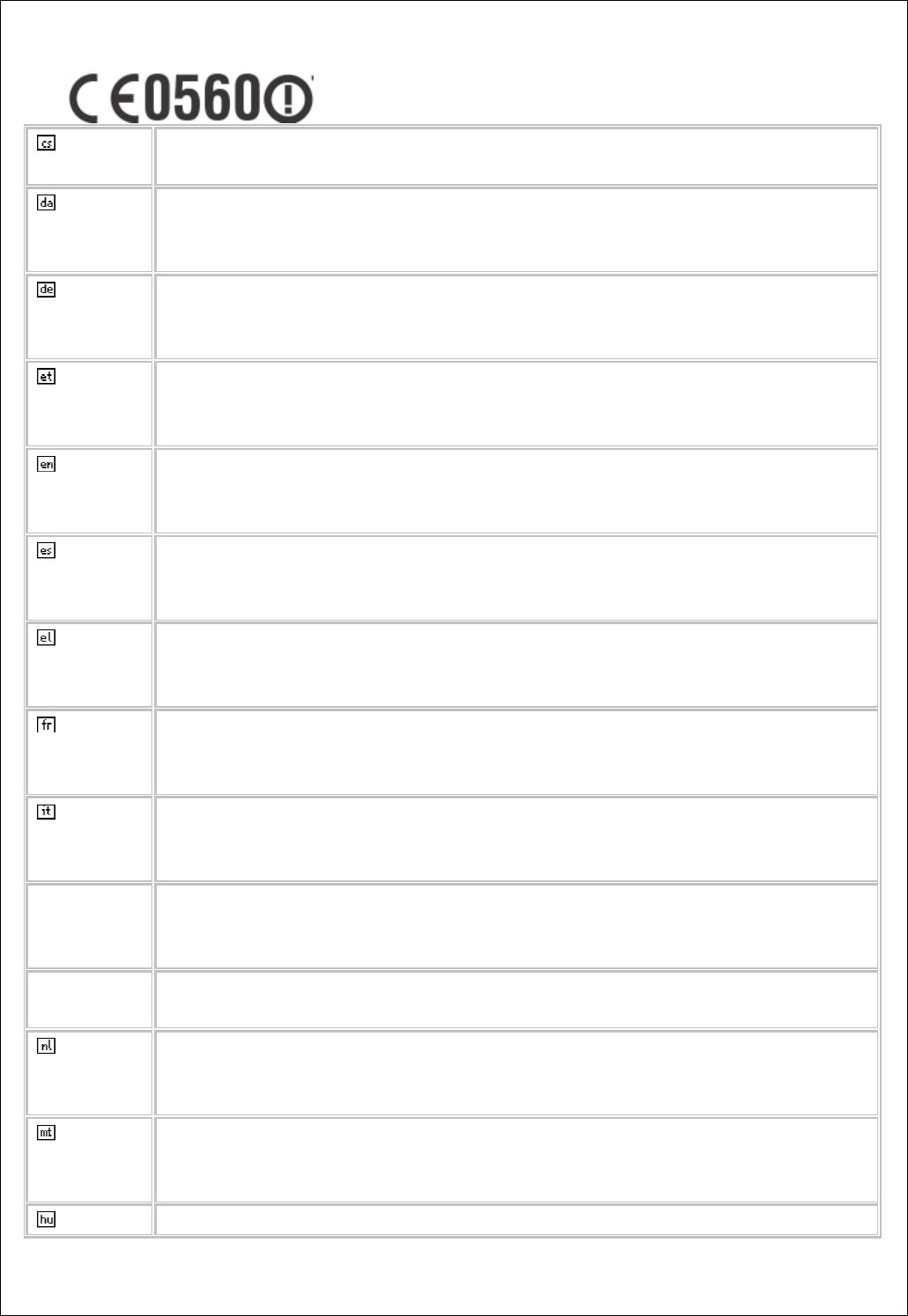
8
esky
[Czech]
[Jméno výrobce] tímto prohlašuje, že tento [typ zaízení] je ve shod se
základními požadavky a dalšími píslušnými ustanoveními smrnice 1999/5/ES.
Dansk
[Danish]
Undertegnede [fabrikantens navn] erklærer herved, at følgende udstyr
[udstyrets typebetegnelse] overholder de væsentlige krav og øvrige relevante
krav i direktiv 1999/5/EF.
Deutsch
[German]
Hiermit erklärt [Name des Herstellers], dass sich das Gerät [Gerätetyp] in
Übereinstimmung mit den grundlegenden Anforderungen und den übrigen
einschlägigen Bestimmungen der Richtlinie 1999/5/EG befindet.
Eesti
[Estonian]
Käesolevaga kinnitab [tootja nimi = name of manufacturer] seadme [seadme
tüüp = type of equipment] vastavust direktiivi 1999/5/EÜ põhinõuetele ja
nimetatud direktiivist tulenevatele teistele asjakohastele sätetele.
English Hereby, [name of manufacturer], declares that this [type of equipment] is in
compliance with the essential requirements and other relevant provisions of
Directive 1999/5/EC.
Español
[Spanish]
Por medio de la presente [nombre del fabricante] declara que el [clase de
equipo] cumple con los requisitos esenciales y cualesquiera otras disposiciones
aplicables o exigibles de la Directiva 1999/5/CE.
[Greek]
[name of manufacturer] [type of equipment]
1999/5/.
Français
[French]
Par la présente [nom du fabricant] déclare que l'appareil [type d'appareil] est
conforme aux exigences essentielles et aux autres dispositions pertinentes de la
directive 1999/5/CE.
Italiano
[Italian]
Con la presente [nome del costruttore] dichiara che questo [tipo di
apparecchio] è conforme ai requisiti essenziali ed alle altre disposizioni pertinenti
stabilite dalla direttiva 1999/5/CE.
Latviski
[Latvian]
Ar šo [name of manufacturer / izgatavotja nosaukums] deklar, ka [type of
equipment / iekrtas tips] atbilst Direktvas 1999/5/EK b tiskaj!m prasb!m un
citiem ar to saisttajiem noteikumiem.
Lietuvi"
[Lithuanian]
Šiuo [manufacturer name] deklaruoja, kad šis [equipment type] atitinka esminius
reikalavimus ir kitas 1999/5/EB Direktyvos nuostatas.
Nederlands
[Dutch]
Hierbij verklaart [naam van de fabrikant] dat het toestel [type van toestel] in
overeenstemming is met de essentiële eisen en de andere relevante
bepalingen van richtlijn 1999/5/EG.
Malti
[Maltese]
Hawnhekk, [isem tal-manifattur], jiddikjara li dan [il-mudel tal-prodott]
jikkonforma mal-#ti$ijiet essenzjali u ma provvedimenti o#rajn relevanti li hemm
fid-Dirrettiva 1999/5/EC.
Magyar Alulírott, [gyártó neve] nyilatkozom, hogy a [... típus] megfelel a vonatkozó
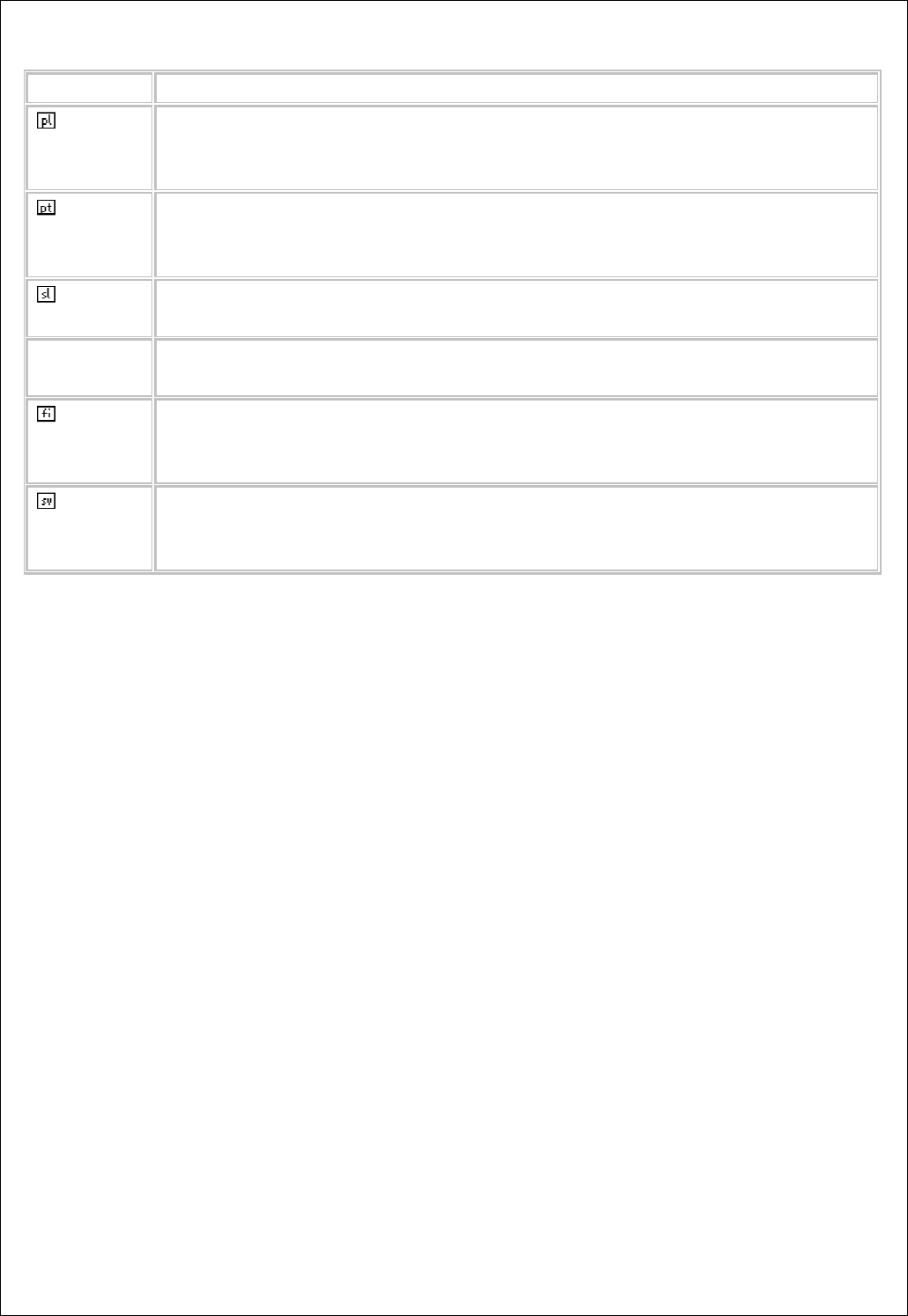
9
[Hungarian] alapvetõ követelményeknek és az 1999/5/EC irányelv egyéb elõírásainak.
Polski
[Polish]
Niniejszym [nazwa producenta] o%wiadcza, &e [nazwa wyrobu] jest zgodny z
zasadniczymi wymogami oraz pozostałymi stosownymi postanowieniami
Dyrektywy 1999/5/EC.
Português
[Portuguese
]
[Nome do fabricante] declara que este [tipo de equipamento] está conforme
com os requisitos essenciais e outras disposições da Directiva 1999/5/CE.
Slovensko
[Slovenian]
[Ime proizvajalca] izjavlja, da je ta [tip opreme] v skladu z bistvenimi zahtevami
in ostalimi relevantnimi dolo'ili direktive 1999/5/ES.
Slovensky
[Slovak]
[Meno výrobcu] týmto vyhlasuje, že [typ zariadenia] sp()a základné požiadavky
a všetky príslušné ustanovenia Smernice 1999/5/ES.
Suomi
[Finnish]
[Valmistaja = manufacturer] vakuuttaa täten että [type of equipment = laitteen
tyyppimerkintä] tyyppinen laite on direktiivin 1999/5/EY oleellisten vaatimusten ja
sitä koskevien direktiivin muiden ehtojen mukainen.
Svenska
[Swedish]
Härmed intygar [företag] att denna [utrustningstyp] står I överensstämmelse
med de väsentliga egenskapskrav och övriga relevanta bestämmelser som
framgår av direktiv 1999/5/EG.
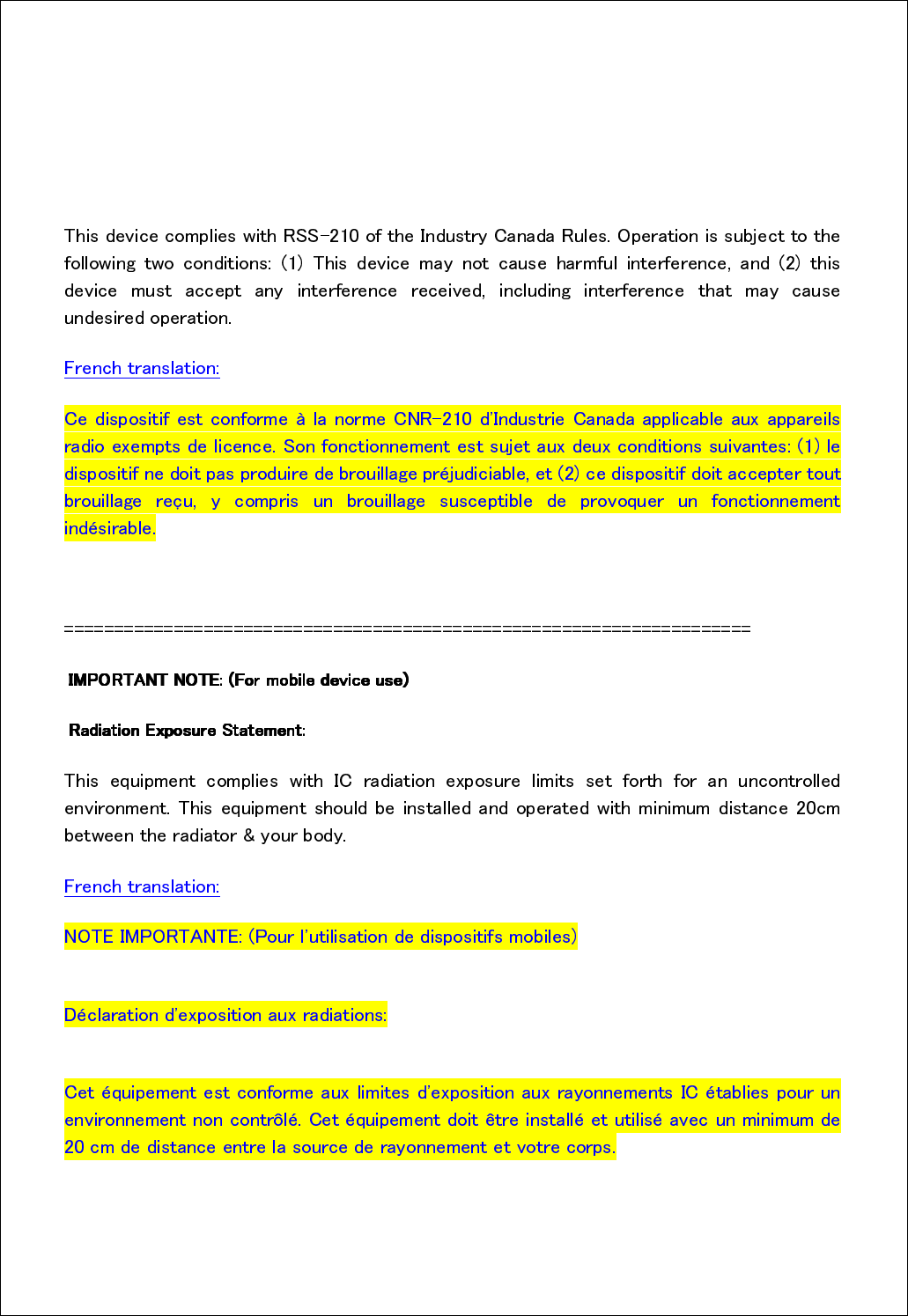
10
᎐ᎵᎫᎼᎺᎻᎹᏀ፧ᎊᎨᎵᎨᎫᎨ፧ᎺᎻᎨᎻᎬᎴᎬᎵᎻᎁ
᎐ᎵᎫᎼᎺᎻᎹᏀ፧ᎊᎨᎵᎨᎫᎨ፧ᎺᎻᎨᎻᎬᎴᎬᎵᎻᎁ᎐ᎵᎫᎼᎺᎻᎹᏀ፧ᎊᎨᎵᎨᎫᎨ፧ᎺᎻᎨᎻᎬᎴᎬᎵᎻᎁ
᎐ᎵᎫᎼᎺᎻᎹᏀ፧ᎊᎨᎵᎨᎫᎨ፧ᎺᎻᎨᎻᎬᎴᎬᎵᎻᎁ፧
፧፧
፧
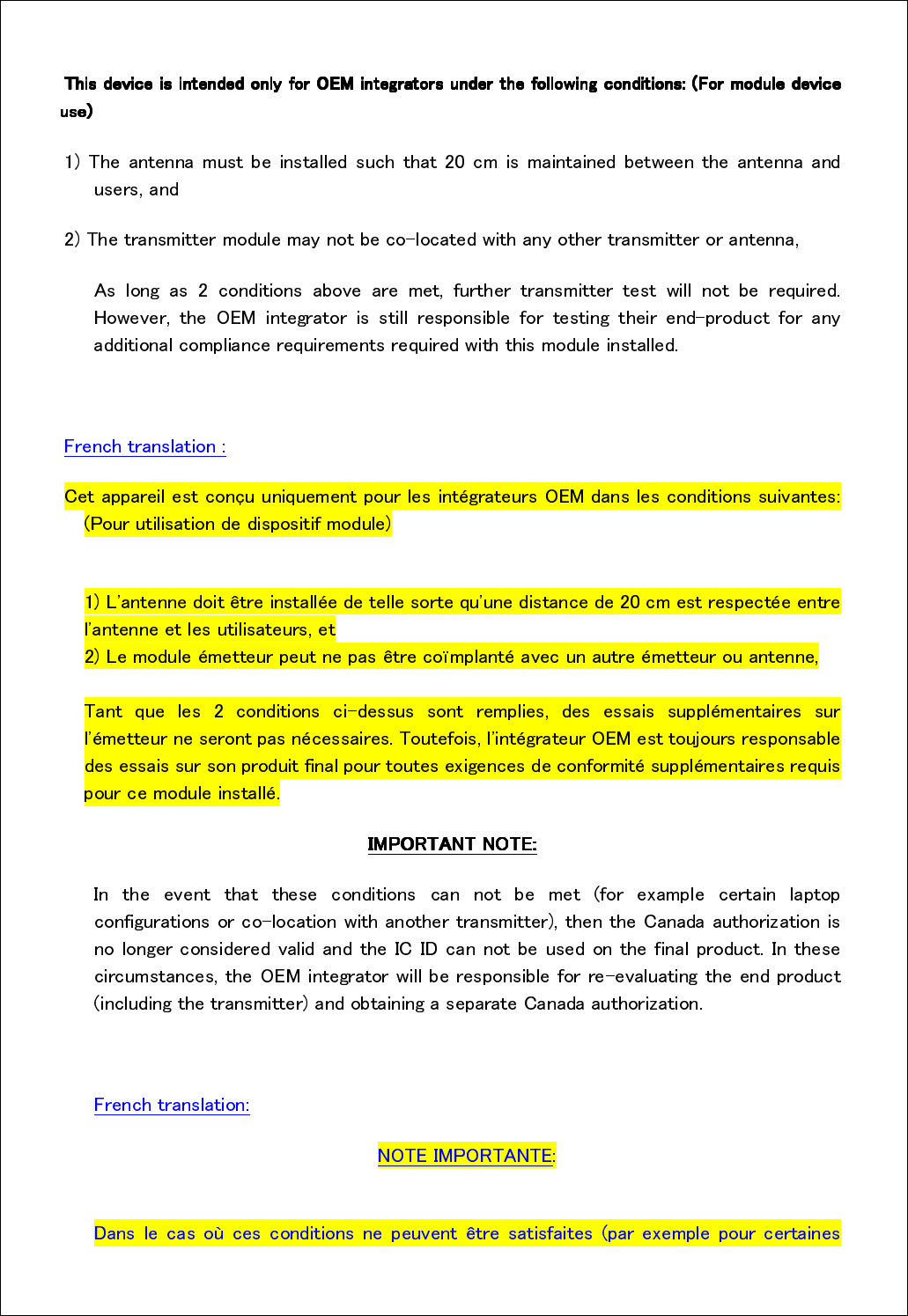
11
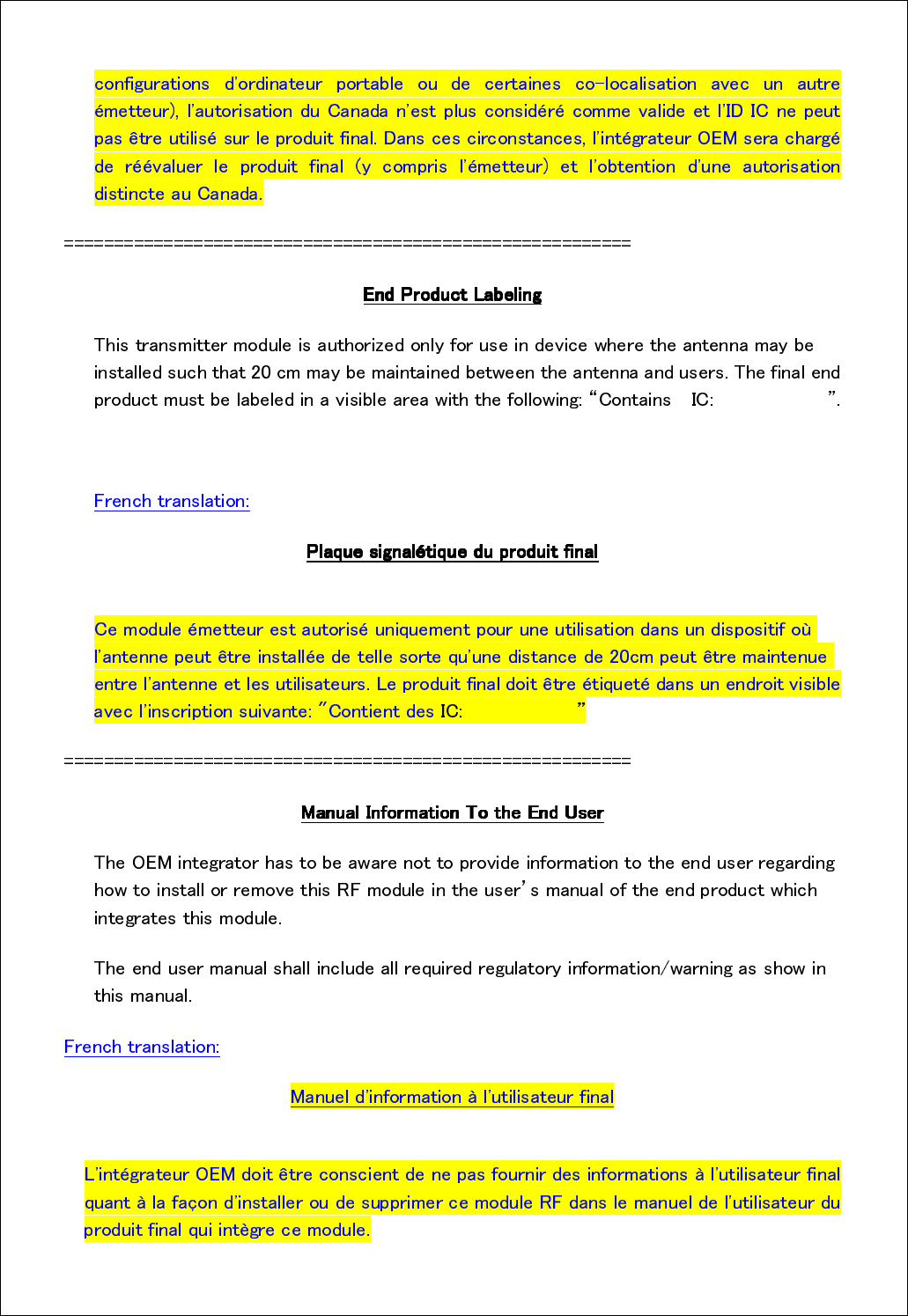
12
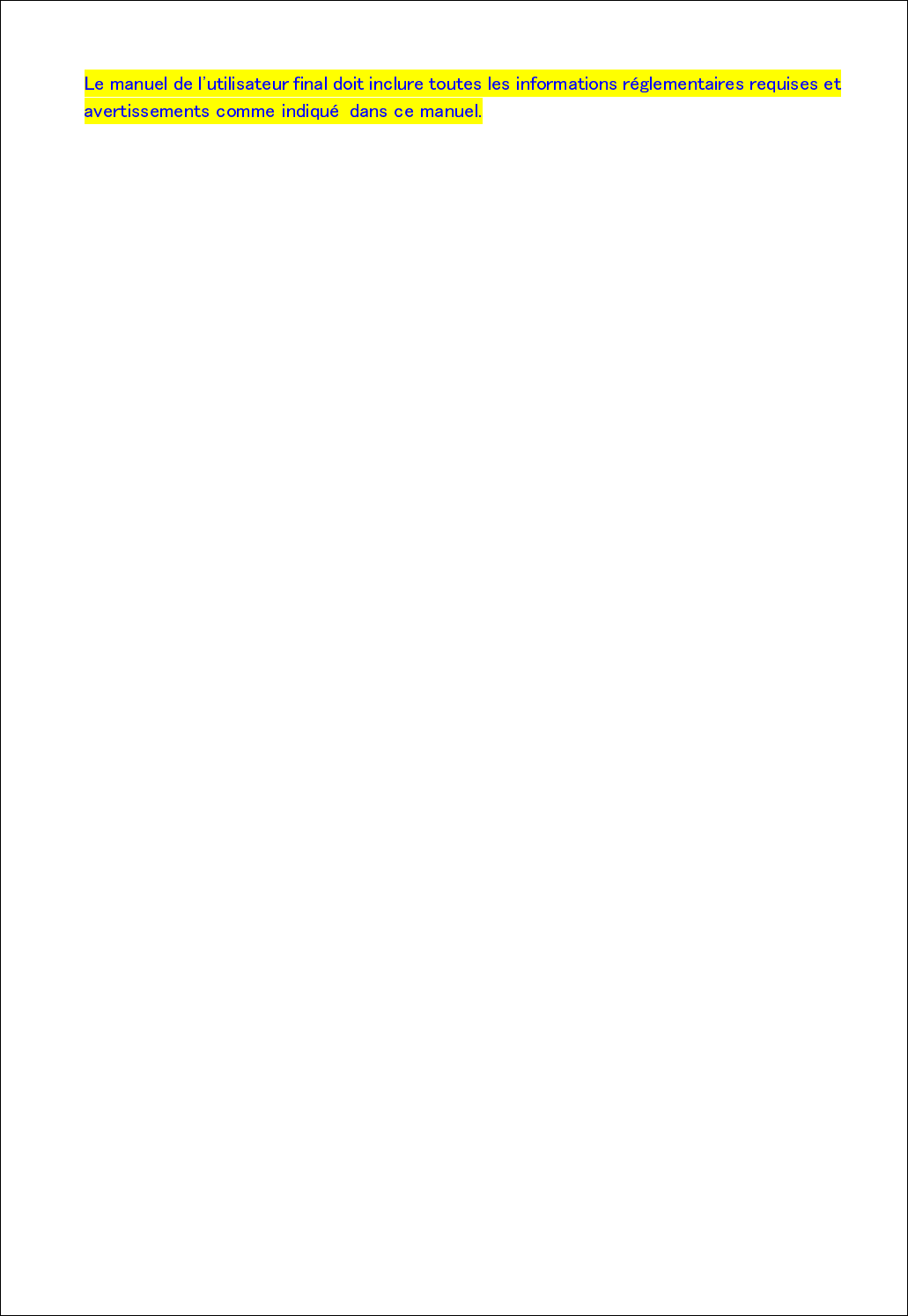
13
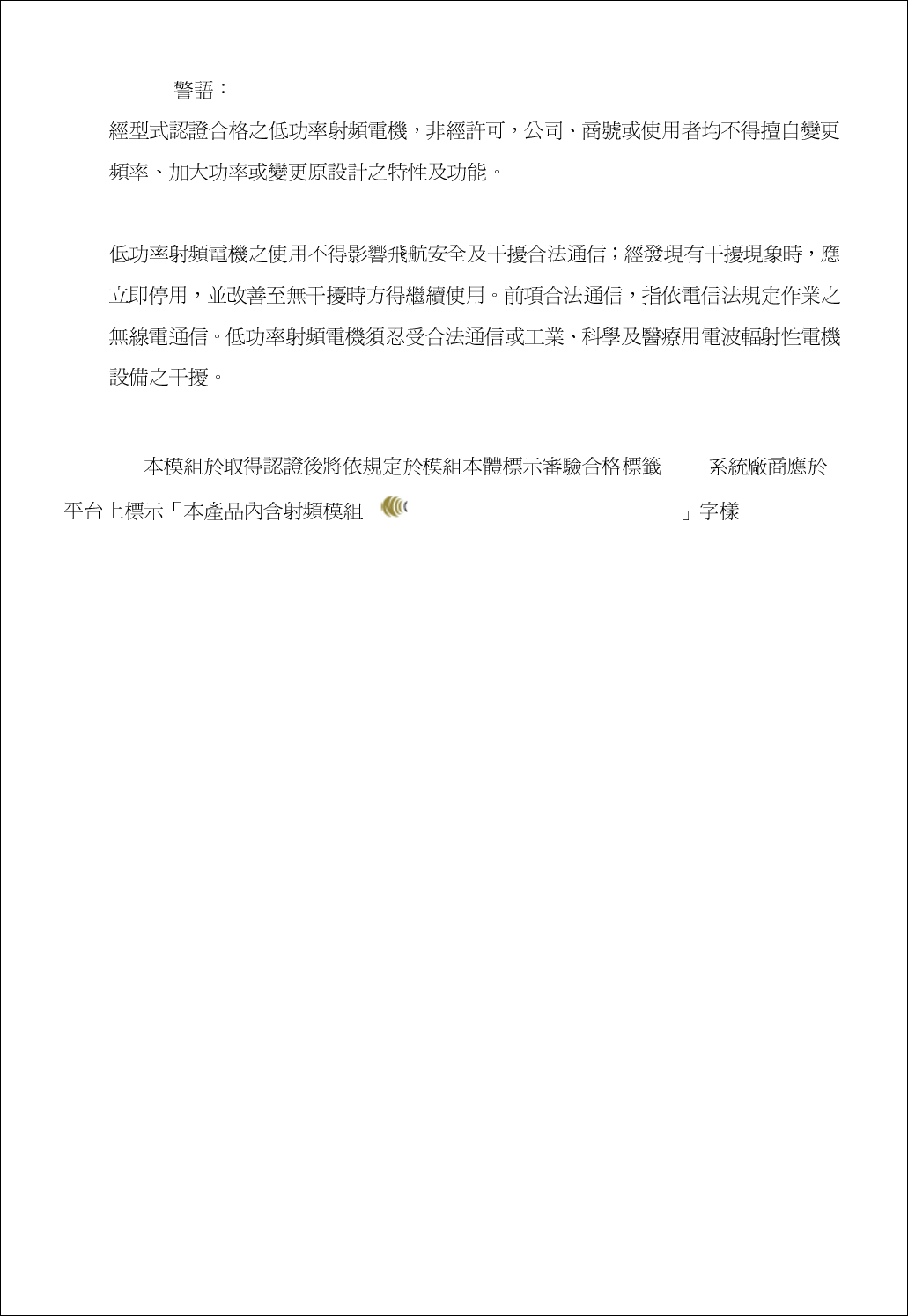
14
For Taiwan
Note: 1. 2.
: XXXyyyLPDzzzz-x (NCC ID)